Introduction: Why Protein is Crucial for Healthy Aging

Maintaining muscle mass after 60 is crucial for strength and overall health. Learn how to maintain muscle mass after 60 through adequate protein intake, physical activity, and proper meal distribution.
- Aging and Muscle Loss: The Challenge of Sarcopenia
As we age, one of the most significant physical changes is the gradual loss of muscle mass and strength, a condition known as sarcopenia. After the age of 30, adults can lose as much as 3-5% of their muscle mass per decade, with this rate accelerating after the age of 60. This natural decline in muscle tissue makes it harder to maintain physical strength, mobility, and independence. Sarcopenia not only affects daily activities, such as walking, lifting, and balance, but also increases the risk of falls, fractures, and other health complications. - The Role of Protein in Muscle Maintenance
Protein plays a critical role in maintaining muscle health and function as we age. It provides the essential building blocks (amino acids) that our bodies need to repair and regenerate muscle tissue. Unfortunately, older adults often consume less protein than their bodies require, which can further contribute to muscle loss. Ensuring adequate protein intake becomes crucial to slow down this decline and help preserve lean body mass. - Benefits of Muscle Mass for Overall Health
Maintaining muscle mass is not just about physical strength. It is also essential for metabolic health, immune function, and maintaining a healthy weight. Strong muscles support bone health, reduce the risk of chronic diseases such as type 2 diabetes and heart disease, and improve longevity. By prioritizing protein in your diet, you can enhance muscle health, stay active, and continue to enjoy a higher quality of life as you age.
1. Understanding Sarcopenia: How to Maintain Muscle Mass After 60
What is Sarcopenia?
Sarcopenia is the progressive loss of muscle mass, strength, and function that occurs with aging. It typically begins around the age of 30 but becomes more noticeable after the age of 60. Unlike normal muscle atrophy from inactivity, sarcopenia is an age-related condition influenced by several factors, including hormonal changes, reduced physical activity, and inadequate nutrition. As muscle mass declines, strength decreases, making it harder to perform everyday tasks like lifting groceries, climbing stairs, or even maintaining balance.
How Common is Sarcopenia?
Sarcopenia affects a significant portion of the older population. Studies estimate that between 10% to 16% of adults over the age of 60 are affected, with this number increasing to over 50% by the age of 80. It is often underdiagnosed because the gradual loss of muscle is sometimes seen as a normal part of aging. However, sarcopenia should be recognized as a medical condition that can have serious health consequences, including increased frailty, higher risk of falls, and a reduced ability to recover from illnesses or surgeries.
Impact on Daily Life and Mobility
Loss of muscle mass leads to a decrease in physical strength and endurance, which can severely impact an individual's ability to perform basic activities of daily living. This loss of function can contribute to a reduced sense of independence and quality of life. Muscle loss also affects balance and coordination, making seniors more vulnerable to falls and injuries, which are a leading cause of disability in older adults.
Protein’s Role in Combating Sarcopenia
Research shows that adequate protein intake can help slow the progression of sarcopenia. Protein provides the essential amino acids required for muscle repair and growth, which become more critical as muscle synthesis naturally declines with age. Combined with regular physical activity, particularly resistance exercises, protein can help older adults maintain muscle mass, preserve mobility, and promote healthy aging.
2. How Much Protein Do Seniors Need?
General Protein Recommendations for Seniors
As people age, their bodies require more protein to maintain muscle mass and support overall health. The general recommendation for older adults is around 1.0 to 1.2 grams of protein per kilogram of body weight per day. For example, a senior weighing 70 kg (about 154 pounds) would need between 70 to 84 grams of protein daily. These guidelines reflect the increased protein needs due to reduced muscle protein synthesis, which naturally occurs as part of the aging process.

Increased Protein Needs for Seniors with Health Conditions
For older adults dealing with certain health conditions, such as chronic illness, injury recovery, or hospitalization, protein needs may be even higher. Experts suggest that seniors in these situations might require up to 1.2 to 1.5 grams of protein per kilogram of body weight daily to prevent further muscle loss and promote recovery. Protein not only aids in muscle repair but also supports immune function and wound healing, making it critical during times of illness or injury.
Why Do Seniors Need More Protein?
With age, the body's efficiency at processing protein decreases, making it harder to maintain muscle mass with the same protein intake as when younger. This phenomenon is called "anabolic resistance," where the body requires more protein to achieve the same muscle-building effect. Therefore, older adults need to consume more protein to counterbalance this reduced efficiency and ensure adequate muscle protein synthesis.
Balancing Protein Intake Throughout the Day
It's not just about the total amount of protein consumed—timing and distribution matter too. Research suggests that spreading protein intake evenly across meals, rather than consuming most of it in one meal, leads to better muscle protein synthesis. This means including protein-rich foods at breakfast, lunch, and dinner for optimal results in maintaining muscle mass.
3. Best Protein Sources for Older Adults
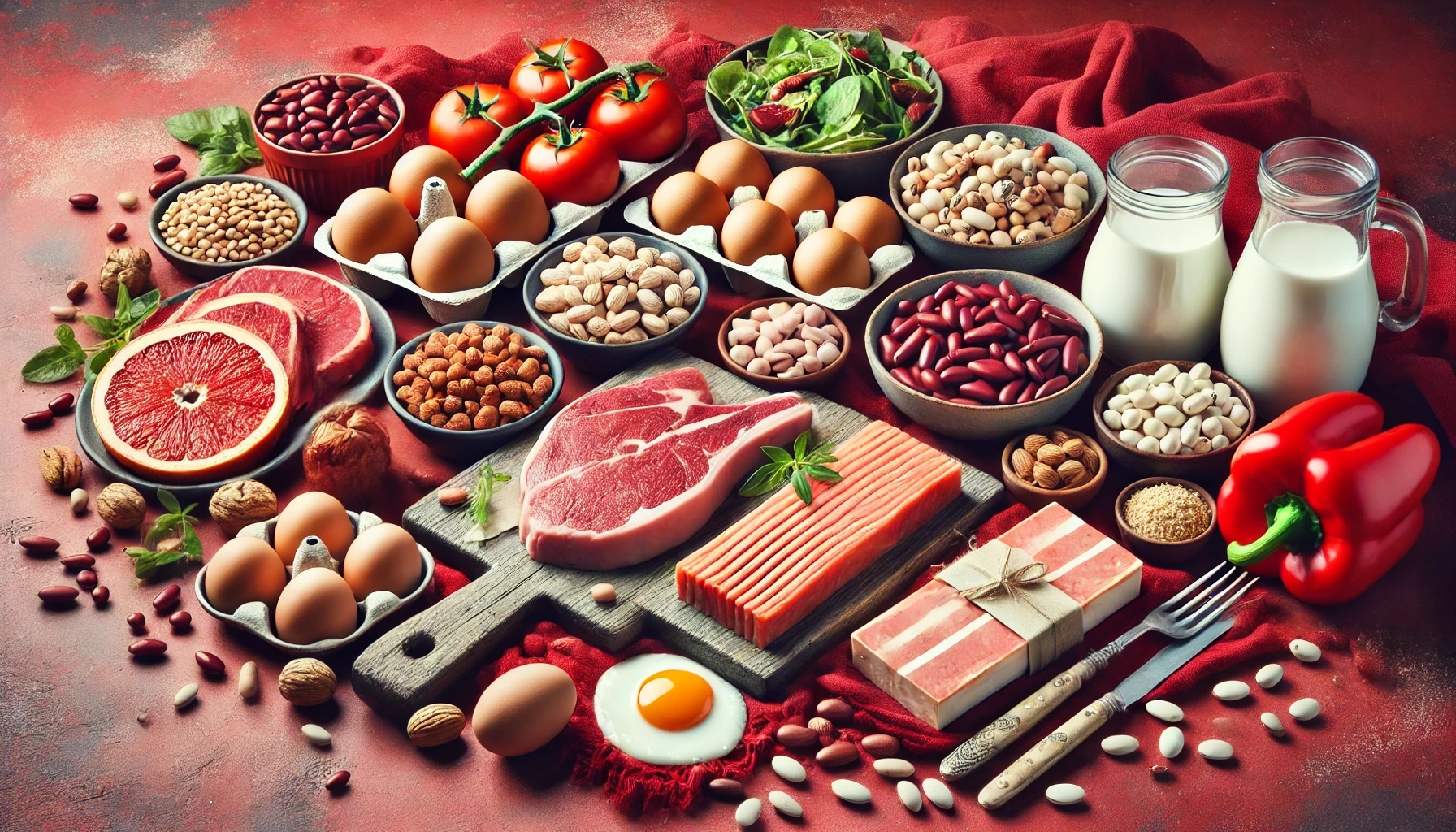
Lean Animal Proteins: A High-Quality Protein Choice
Animal-based proteins are considered complete proteins, meaning they contain all nine essential amino acids that the body needs for muscle maintenance and repair. Lean meats such as chicken, turkey, and lean cuts of beef or pork are excellent sources of high-quality protein. Fish, particularly fatty fish like salmon, mackerel, and sardines, not only provide protein but also omega-3 fatty acids, which have anti-inflammatory properties that may help support muscle health. For seniors looking to minimize fat intake, opting for leaner cuts of meat or grilling and baking instead of frying is a healthier choice.
Eggs: A Nutrient-Rich, Easy-to-Digest Option
Eggs are a nutrient powerhouse for older adults, offering about 6 grams of high-quality protein per large egg. They are also rich in vitamins like B12, which is particularly important for seniors to support cognitive health and energy production. Eggs are easy to prepare and digest, making them a versatile option for any meal, whether scrambled, poached, or added to salads or soups.
Dairy Products: Protein with Added Bone Health Benefits
Dairy products like Greek yogurt, cottage cheese, and low-fat milk provide not only protein but also calcium and vitamin D, which are important for bone health. Greek yogurt is especially protein-rich, containing about 15-20 grams per serving. For those who are lactose intolerant, lactose-free dairy products or fortified plant-based alternatives such as almond, soy, or oat milk can be suitable options.
Plant-Based Proteins: Nutritious and Heart-Healthy
For seniors who prefer plant-based diets or want to reduce animal protein consumption, there are numerous plant-based protein sources to choose from. Beans, lentils, chickpeas, quinoa, tofu, and tempeh are all excellent sources of protein. These foods are also high in fiber, which helps support digestive health. Combining different plant proteins throughout the day ensures that all essential amino acids are consumed.
Protein Supplements: When Food Isn’t Enough
In cases where older adults struggle to meet their protein needs through food alone due to appetite loss or difficulty chewing, protein supplements can be a useful addition. Protein powders, shakes, or bars offer a convenient way to boost protein intake, especially after exercise or as a snack between meals. However, it’s essential to choose supplements that are low in added sugars and unnecessary fillers. Consulting with a healthcare provider or dietitian can help identify the best option for individual needs.
4. Timing and Distribution of Protein Throughout the Day
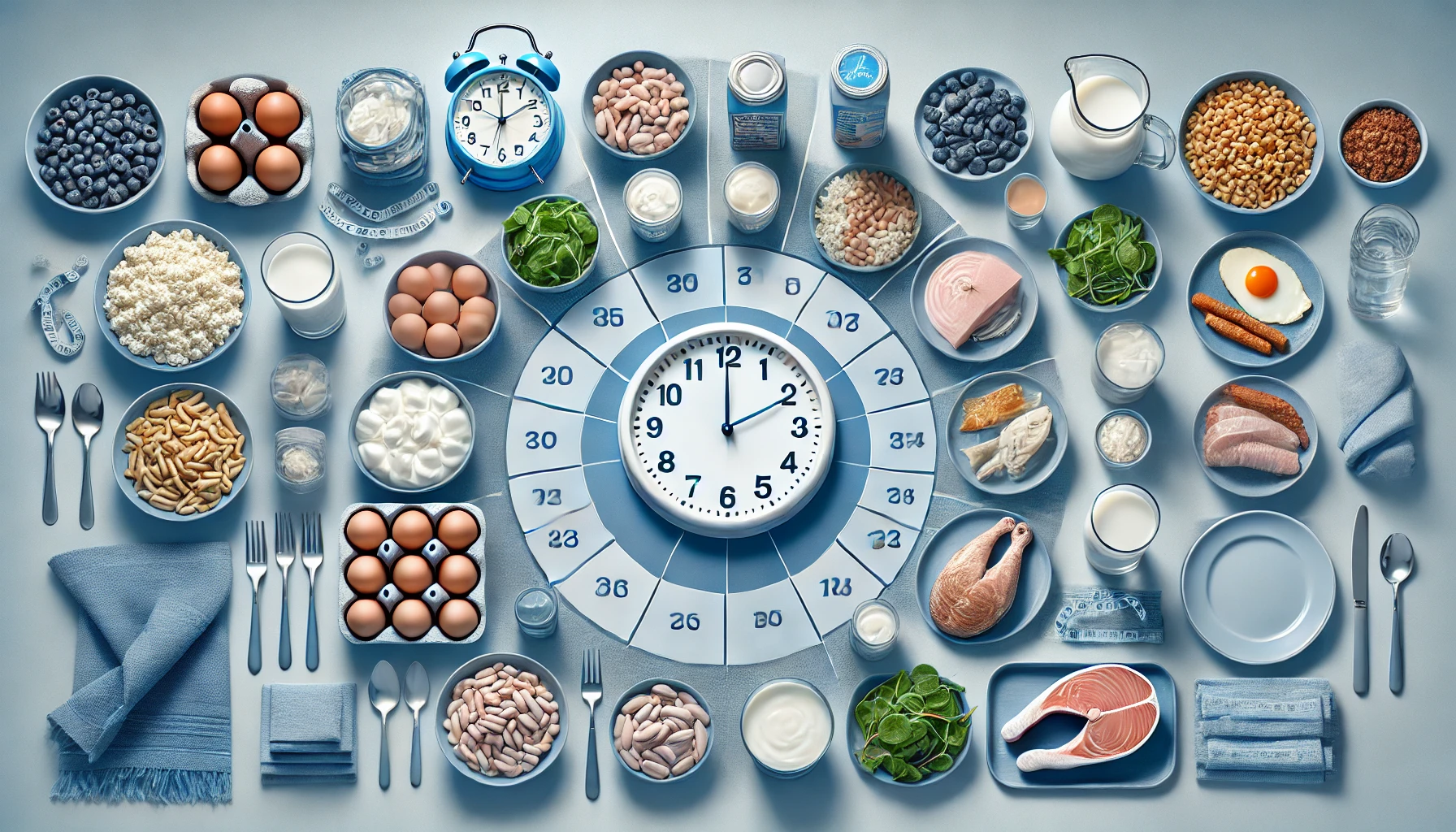
The Importance of Spreading Protein Intake
Research shows that older adults benefit most when protein intake is evenly distributed across meals throughout the day. Consuming 20-30 grams of protein at each meal can stimulate muscle protein synthesis more effectively than eating most of your protein in just one meal. This balanced approach provides a constant supply of essential amino acids to the muscles, promoting better muscle repair and maintenance. It’s particularly important for seniors, as the body becomes less efficient at processing protein with age, making regular protein intake even more critical.
Incorporating Protein into Breakfast, Lunch, and Dinner
Breakfast is often the meal where many people, especially older adults, consume the least protein, which can limit muscle recovery and growth throughout the day. Simple strategies to boost breakfast protein include adding eggs, Greek yogurt, or a plant-based protein shake. For lunch and dinner, lean meats, fish, beans, and tofu are excellent options to round out the day’s protein intake. A well-rounded meal plan might include a veggie omelet for breakfast (20 grams of protein), a grilled chicken salad for lunch (25-30 grams), and a portion of baked fish or a lentil stew for dinner (30 grams).
Snacks as a Protein Boost Between Meals
In addition to three balanced meals, protein-rich snacks can help ensure you meet your daily needs. Snacks like a handful of nuts, a piece of string cheese, a boiled egg, or a smoothie can help bridge any gaps between meals and prevent muscle breakdown during longer periods without food. Including protein with snacks is also a smart way to control hunger and keep energy levels steady throughout the day, which is particularly important for older adults managing blood sugar levels or maintaining energy for daily activities.
5. Combining Protein with Physical Activity for Maximum Benefits
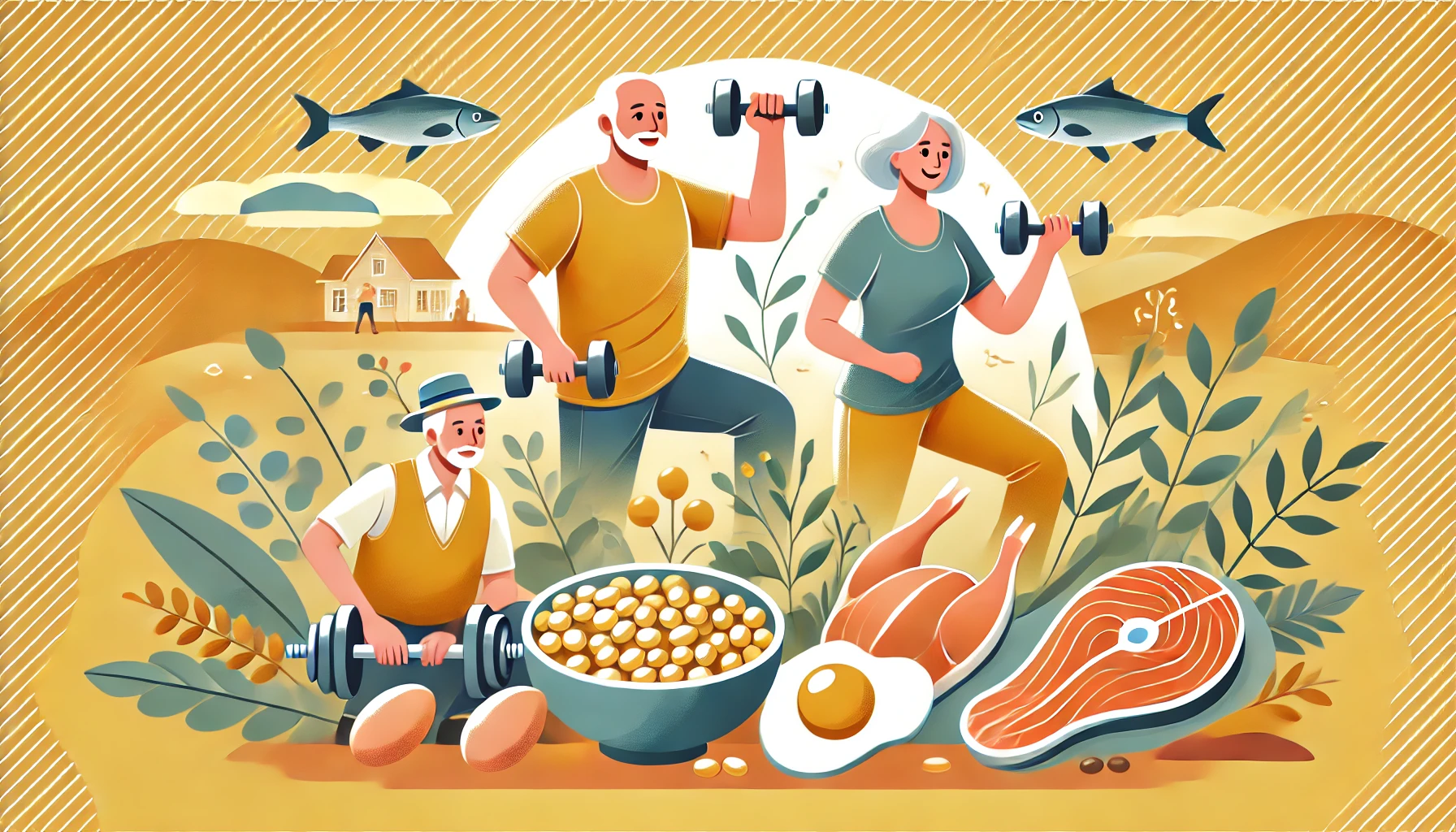
The Synergistic Effect of Protein and Exercise
While adequate protein intake is essential for muscle maintenance, it is most effective when combined with regular physical activity, particularly strength and resistance training. Exercise stimulates muscle protein synthesis, the process by which muscles repair and grow after being used. For older adults, this combination can significantly slow down or even reverse age-related muscle loss (sarcopenia). Resistance training, like lifting weights or using resistance bands, is particularly beneficial for increasing muscle strength and endurance.
Types of Exercises to Focus On
Strength training exercises, such as squats, lunges, and arm curls, help build and maintain muscle mass, especially in key areas like the legs, arms, and core. Weight-bearing activities, like walking or climbing stairs, also support muscle and bone health. Even if heavy lifting isn’t feasible, lighter resistance exercises or bodyweight movements can be effective for older adults. Gentle activities like yoga or Pilates improve flexibility and core strength, which can reduce the risk of falls and injuries.
How Protein Supports Post-Exercise Recovery
Protein plays a vital role in post-exercise recovery by supplying the amino acids needed to repair muscle fibers that break down during physical activity. Consuming protein-rich foods or supplements within 30 to 60 minutes after exercise optimizes muscle recovery and growth. This post-workout window is when muscles are most receptive to protein, making it a critical time to meet your protein needs.
Building a Balanced Routine
Combining 2-3 sessions of strength training per week with a well-balanced, protein-rich diet helps maintain muscle mass and functional strength in older adults. Incorporating both upper and lower body exercises ensures all major muscle groups are targeted, while the right protein intake ensures muscles get the nutrients they need to repair, grow, and stay strong.
6. Overcoming Common Barriers to Protein Intake for Seniors
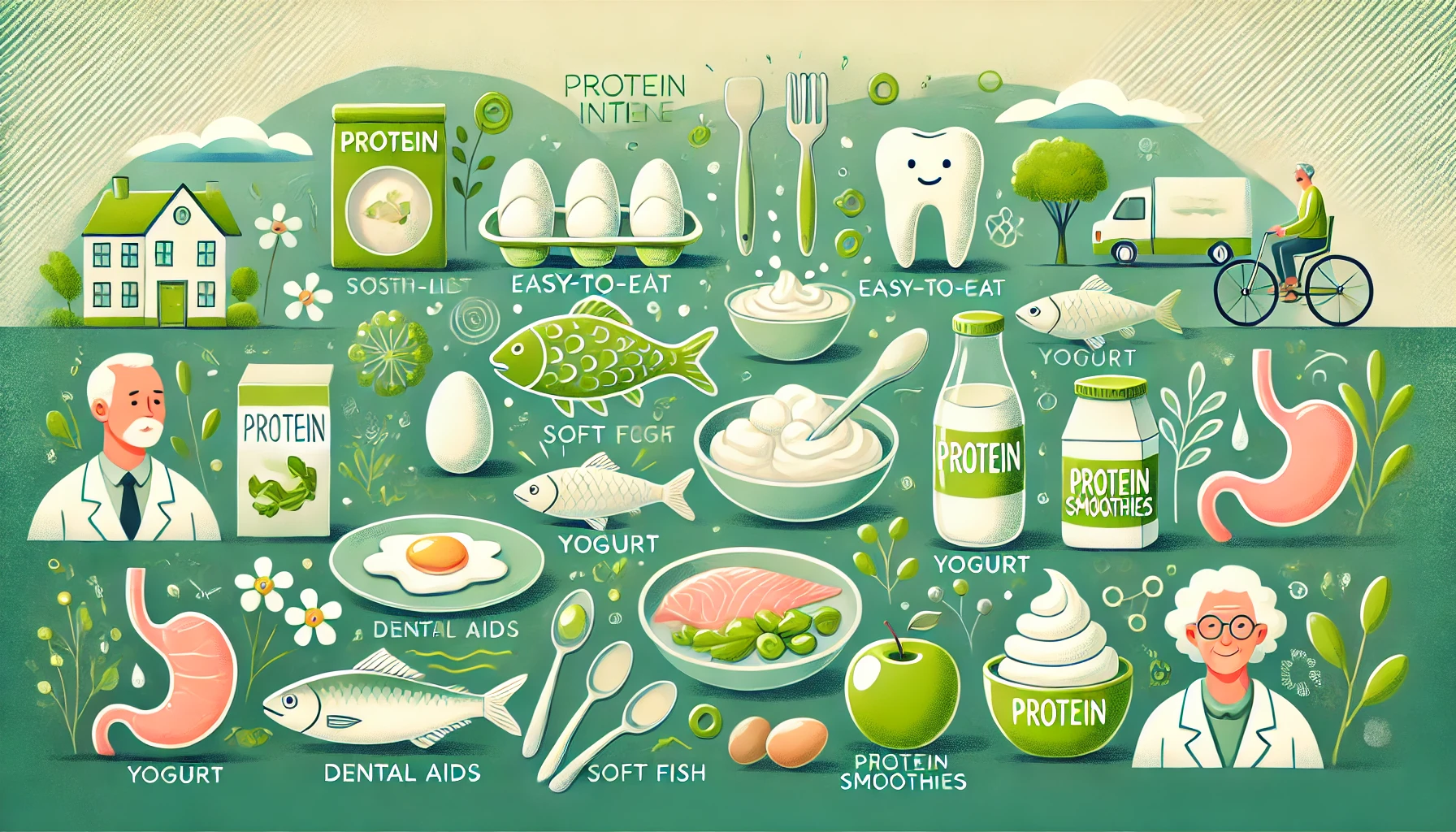
Decreased Appetite and Changes in Taste
As people age, appetite often diminishes, which can lead to lower protein intake. Seniors may also experience changes in taste or preferences, making certain protein-rich foods less appealing. To overcome this, focus on smaller, nutrient-dense meals and snacks spread throughout the day. Easy-to-digest, high-protein options like smoothies made with Greek yogurt or protein powder, scrambled eggs, or soft cheeses can help increase protein consumption without requiring large meals. Incorporating flavor boosters like herbs, spices, or citrus can enhance the taste of meals and make them more enjoyable.
Difficulty Chewing or Swallowing
Dental issues, such as missing teeth or ill-fitting dentures, can make it hard for seniors to chew tougher protein sources like meat. To address this, prioritize softer, easy-to-chew options that are still high in protein. Foods like cottage cheese, yogurt, eggs, tofu, fish, and tender cuts of poultry are excellent choices. Smoothies, soups, and stews can also be fortified with protein and are often easier to consume for individuals with chewing or swallowing difficulties. Additionally, blending cooked meats or legumes into sauces and soups can increase protein intake in a more manageable form.
Digestive Issues and Protein Tolerance
Some older adults may struggle with digesting certain protein sources, particularly dairy, due to lactose intolerance or other digestive sensitivities. Fortunately, there are lactose-free dairy products, such as lactose-free milk and yogurt, and fortified plant-based alternatives like almond, soy, or oat milk. For those with digestive issues, smaller, more frequent meals and snacks can help ease the digestion of protein-rich foods. If certain foods continue to cause discomfort, consulting a dietitian or healthcare provider can help identify alternative protein sources and manage digestive concerns effectively.
7. Monitoring Muscle Mass and Protein Intake: What to Watch For
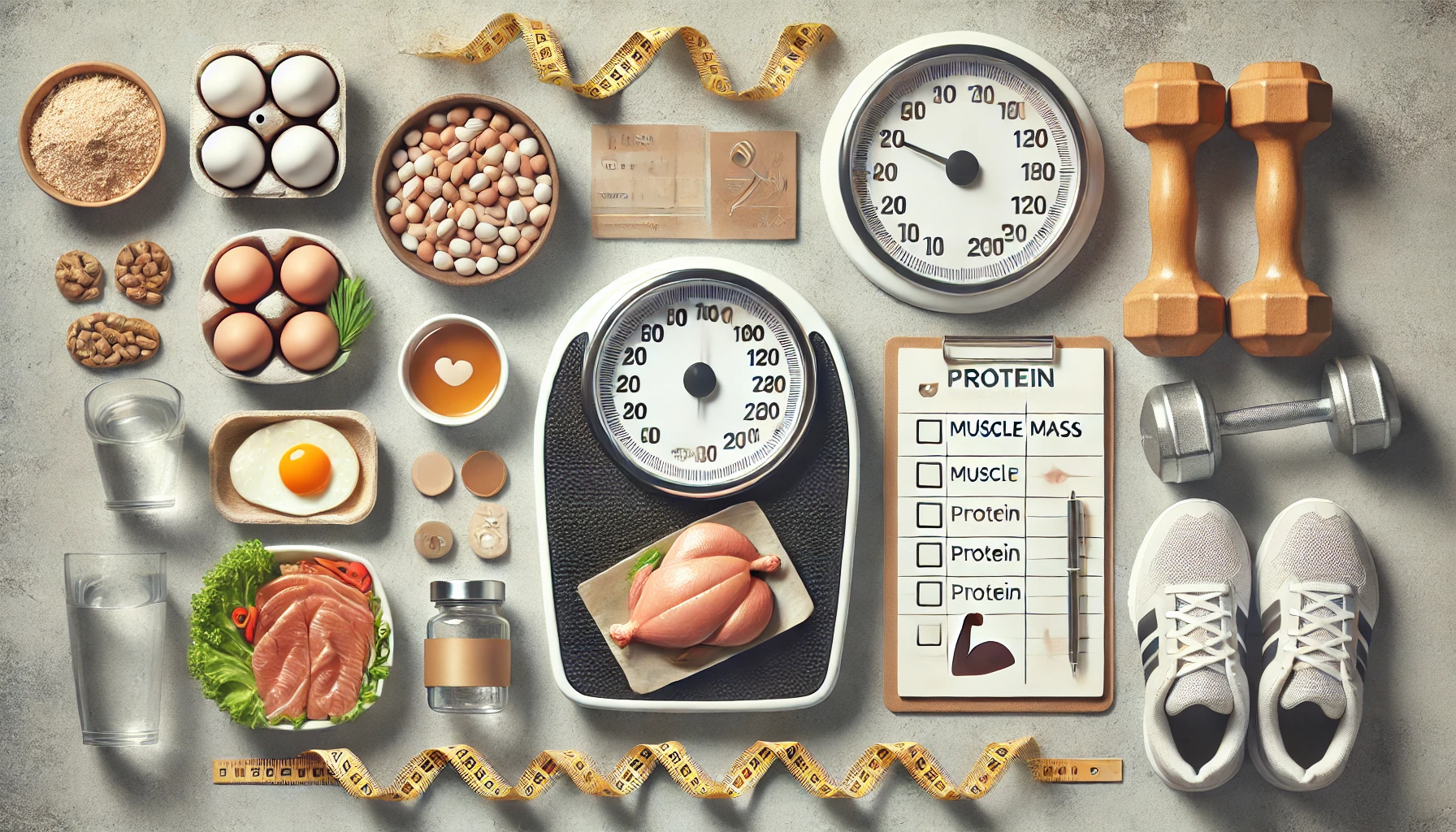
Tracking Muscle Mass and Strength
Monitoring muscle mass and strength is essential for ensuring that your protein intake and exercise routine are effectively supporting healthy aging. While formal body composition tests (like DEXA scans) provide the most accurate measurements, simple methods like measuring waist circumference, observing changes in muscle tone, or tracking how easily you perform everyday tasks (e.g., climbing stairs, carrying groceries) can give you valuable insights. If you notice a decline in strength or mobility, it might be a sign that you need to adjust your diet or exercise routine.
Signs of Inadequate Protein Intake
Not getting enough protein can lead to several warning signs, such as fatigue, frequent muscle cramps, slow wound healing, and muscle weakness. Seniors who do not consume enough protein may also notice slower recovery from minor injuries or illnesses. If these symptoms appear, it may be necessary to increase protein intake or consult a healthcare provider for personalized dietary recommendations.
Maintaining Energy and Recovery
Adequate protein helps maintain energy levels and supports recovery from physical activity or illness. If you find yourself feeling excessively tired after exertion or if it takes longer than usual to bounce back from colds, injuries, or surgery, these could be indicators that you’re not consuming enough protein.
Consulting Healthcare Providers
Regular check-ins with a healthcare provider or a dietitian can help ensure you’re on track with your protein intake and muscle health. They can assess your muscle mass, adjust your protein goals, and recommend supplements or dietary adjustments if needed, particularly if you're managing chronic conditions or recovering from surgery.
Conclusion: Protein as a Pillar of Healthy Aging
Recap of Protein’s Importance for Muscle Maintenance
As we age, maintaining muscle mass becomes critical for preserving mobility, strength, and overall quality of life. Protein plays a key role in combating age-related muscle loss, helping to preserve lean body mass and supporting recovery after physical activity. Ensuring you consume enough protein each day, particularly when combined with exercise, is a simple yet powerful strategy for healthy aging.
Take Control of Your Nutrition
By prioritizing high-quality protein sources—whether from lean meats, fish, eggs, dairy, or plant-based options—seniors can meet their increased protein needs. Pairing a balanced diet with physical activity like strength training ensures that muscles stay strong and functional, allowing for a more active, independent lifestyle.
Encouragement to Seek Professional Guidance
If you’re unsure whether you’re meeting your protein needs or need help adjusting your diet, consulting a healthcare provider or dietitian can provide tailored advice. They can help create a nutrition and exercise plan that supports your health goals, making it easier to age well and stay strong.


